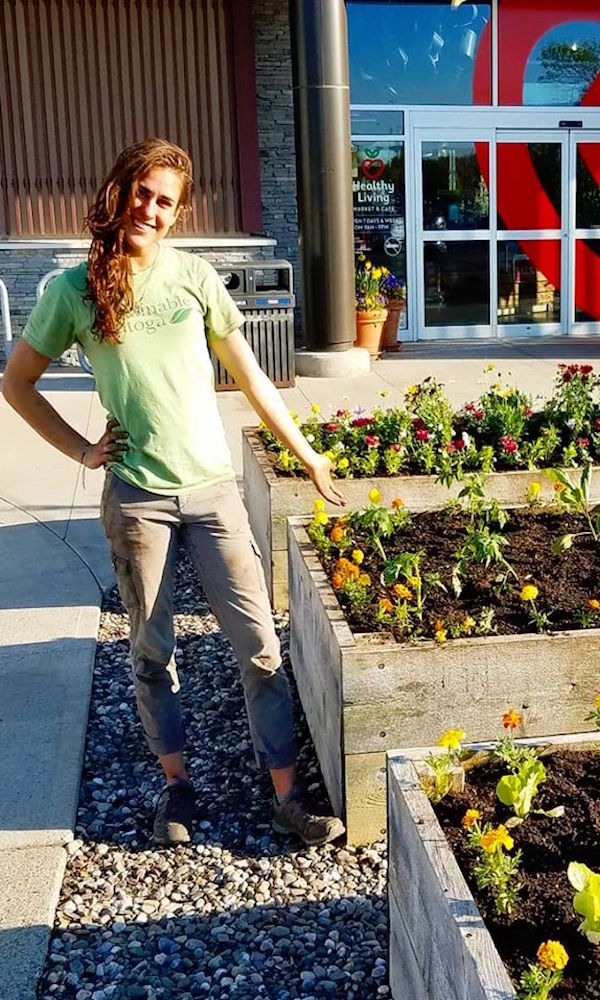With the COVID-19 crisis still bearing down on New York State, many have turned to the greenery in their yards as a source of at-home relief. It turns out that getting your hands dirty doing a little yard work isn’t just beneficial for your health and mental wellbeing (spending time outside has been associated with reducing stress, depression, anxiety and even heart attack/stroke), but gardening is also a quick and easy way to put some fresh fruits, veggies and herbs on the table without having to don a face mask or rubber gloves.
For those whose thumbs aren’t so naturally green, Saratoga Living turned to garden designer and plant-care specialist Rachelle Thomas, founder and owner of Saratoga-based Daisies and Dahlias, to get some advice about what’s best to grow here in the Capital Region. “For me, easy plants are those that need minimal care once they’re planted,” says Thomas. If you’ve recently driven through the Spa City and its surroundings, you’ve no doubt seen Thomas’ work at the Wilton Mall’s Healthy Living to spots along Broadway such as Palette Cafe and the soon-to-open new headquarters and storefront for Dish Wish Coffee. “I deal with a lot of different plants, and some are definitely more high maintenance than others,” says Thomas. “So many people are finally doing those garden projects they didn’t have time for before. But they don’t always need to work hard to have beautiful blooms or plants.” Sounds good—let’s get our gardening gloves on and dig in!
Cold-Weather Veggies

With temperatures still dipping below freezing around this time of year, cold-weather crops are worth planting (really as soon as the ground thaws). These cool-climate vegetables include a lot of healthy greens and ingredients perfect for fresh salads, such as carrots, kale, beets, lettuce, spinach, Swiss chard and radishes. “Growing your own food is easy and super rewarding,” says Thomas. “These veggies can even be grown in containers if you don’t have space for a garden.”
Warm-Weather Veggies
Warm-weather vegetables must be planted outdoors after the risk of frosting is gone (usually mid-May). Nonetheless, seedlings can be started indoors earlier and planted outside when it’s warm enough. This will extend the plant’s growing season, though, don’t try this with root veggies like carrots and beets. Vegetables that can take the heat include green bush beans, cucumber, peppers, tomato and eggplant. Sounds like one delicious veggie pizza in the making!
Herbs
Herbs are usually low-maintenance and a great source for fresh spices and other ingredients to, er, spice up your home cooking. Parsley, basil, rosemary, thyme and chives do well in the Capital Region. “All veggies and herbs prefer full sun for maximum harvest,” says Thomas. As for any pests, Thomas adds: “Having dogs or cats near the garden can also keep away critters.”
Wildflowers
Those seeking the ultimate easy-care option can always opt for a wildflower garden. These plants don’t just require minimal upkeep, they’re also good for local pollinator populations like bees and butterflies. There are lots of options to plant here: sunflowers, zinnias, cosmos, black-eyed Susans, beebalm and Joe-Pye weed, to name a few. However, plant these flowers far away from your other garden beds. As the name implies, wildflowers tend to take over.
Sun Perennials
Perennials are plants that come back every year, flowering around the same time each season (ie. irises in the late spring). For this reason, it’s best to plant a variety of perennials to insure pretty blooms throughout the whole season. Upstate New Yorkers with sunnier yards should look to include coneflowers (echinacea), sedum autumn joy, phlox, daisies, Stella D’oro Lilies and Siberian irises.
Shade/Partial Sun Perennials
For your shadier garden spots, put in some hosta, astilbe, ferns, coral bells (heuchera) and ligularia. With the exception of coral bells, all of these decorative plants can be completely cut back in the fall. Best of all, most of these perennials are pest-free and disease-resistant, making them even easier to care for in the garden.
Sun Annuals
Annuals can’t survive a frost, so it’s best to wait until mid-May to plant them (some annuals, however, like mums and pansies can stand below-freezing temperatures). Unlike perennials, these flowers continue blooming for the entire season. “They’re great for planters and adding color to perennial garden beds,” says Thomas. “They come in a variety of colors, sizes and styles, so you can get really creative with them every year.” For sun-loving annuals, start off experimenting with some vinca flowers, geraniums, SunPatiens, mandevilla (dipladenia), dichondra, canna and euphorbia.
Shade/Partial Sun Annuals
The annuals that love the shade include coleus, begonias, impatiens, fuchsia, ivy and some ferns. These plants are perfect for sprucing up less sunny areas of the yard where other vegetation has difficulty growing. “I think in some ways it’s a relief that this lockdown is happening during spring when all the plants are coming to life,” says Thomas. “It’s super rewarding to watch plants grow, to see the bees visit the flowers and eat veggies fresh from the garden. It gives us hope of new beginnings.”
